#shōgun finale spoilers
Text
I mentioned this briefly over on MDL yesterday, but since I'm back from my theatre trip I figured I'd say a little something about the Shōgun finale here too.
I've seen quite the divide in how people felt about the ending; some hated it whilst others, myself included, loved it.
I think one of the things that some people feel disappointed by is the fact we never got to see the battle of Sekigahara that the show was building up to. Yet the truth is that Shōgun was never going to show it, because in terms of the story the viewer didn't need to see the battle to know the outcome.
The story was always about Toranaga and the journey he takes towards becoming Shōgun. He is a master strategist, and has been playing the game of war from the very start, just silently and through methods of politics rather than by the sword. He uses every person to his advantage, moving them like pieces on a board for his endgame, even those who he is closest to. Sure, there are moments he likely doesn't account for - the death of his son and the appearance of Blackthorne, for instance - but like any strategist of his level he either adapts them into his plans, or finds a way to use the moment in his advantage. That's what strategists do.
We don't need to see the battle of Sekigahara, because by the end of the show Toranaga has already won. This is what he tries to tell Yabushige before his death. Toranaga's explanation here reminds me to the moment he's talking to his son, with this quote:
'Why is it that only those who have never fought in battle are so eager to be in one?'
War is inevitable, but Toranaga is trying to minimize the number of those who have to die because of it. After all, his goal is for a peaceful era for Japan.
Mariko's death was the final act of Crimson Sky. Her death shakes the foundations enough to cause action to happen, because her death should not have been allowed to happen. Ishido knows this, which is why he sends his ronin to capture, not kill. Mariko's death, while tragic, is the final nail that sparks change. Ochiba, mourning the death of her childhood friend, decides to tell Toranaga in secret not to send the Heir's army to aid Ishido in battle, meaning that without his banner Ishido's war is no longer a lawful one.
While Mariko's death is a tragic one, it is not a meaningless one. It does not feel cheap, and the finale episode allows the viewers to mourn with those who knew and loved or respected her. I thought this was quite beautifully done, as even though she wasn't present in the episode, her spirit was still there, so she was still very much there. Some of the cinematography beautifully alluded to this, especially in moments like when Blackthorne and Fuji are sitting together in silence, yet there's one seat left -- Mariko's. Blackthorne even says then, 'no translator', because once Mariko had been a bridge of communication and understanding between them.
Another thing which I see a lot of confusion upon is Blackthrone's flash-forward scenes -- did he ever return to England? The answer, in my opinion, is told in the finale episode too. No, he didn't. Toranaga tells Yabushige that Blackthorne will never leave Japan, and in the scenes with an older Blackthorne, we see he's holding Mariko's cross. Yet he drops it into the water, showing that he lets it go. The episode title is 'a dream of a dream', and that's what Blackthorne's flash-forwards are: dreams. Another life, another path - but not this one.
The characters of Shōgun are based on real-life people in history -- it's actually really fascinating, and I've been learning more and more about their real-life counterparts whilst following this gem of a show. If you're interested in learning more, look up names like Tokugawa Ieyasu, Miura Anjin (William Adams) and Hosokawa Gracia (Akechi Tama).
All in all, Shōgun to me leaned more into the political intrique side of war, which for some people will be fascinating, and for others, not so much. But this show has so many layers and so much hidden within it, I can see it being one that's analysed for years to come.
#off topic chatter#shōgun#shōgun finale spoilers#i for one personally loved the series!#but then again i am the type of person who enjoys watching / listening / reading thrawn in star wars#and who spent an entire summer in college once binging the 80's version of legend of galactic heroes#so i've always been a big fan for strategists in media and more political scheming
18 notes
·
View notes
Text

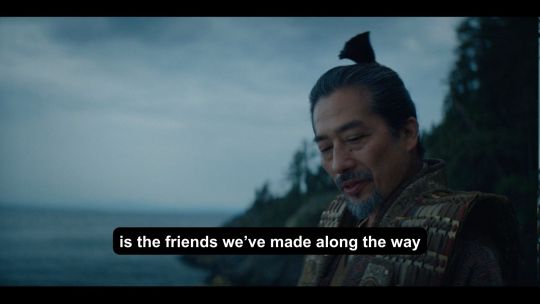

Shōgun (2024)
#yabushige you son of a bitch i will miss you#Shōgun spoilers#shōgun#this is how it ends right#shogun#fx shogun#yoshii toranaga#my contribution to the fandom#10/10 series no notes#the finale even made me like BUNTARO it was so *chefs kiss*
792 notes
·
View notes
Text
Major Shōgun Ep. 9 spoilers:






Yabushige truly gives meaning to the term 'rat bastard'. Toranaga factored his inevitable betrayal into his plans, and Yabushige STILL somehow managed to spring a surprise betrayal. If it wasn't so horrible, it would be impressive how two-faced the man manages to be.
So, about Mariko .... (I'm actually glad I randomly got spoiled the day before seeing this episode and was prepared otherwise I would not have survived what happened to her.)
My take ... Mariko's death was 'pointless' in the same way Nagakado's death was pointless. Nagakado died a senseless death that failed to accomplish anything, but then Toranaga gave his son's death meaning and honour by thanking Nagakado for dying to earn him some time. Mariko blocking the door with her own body served nothing in the sense that it wouldn't prevent Ishido's men from getting in nor did it change the fate of anyone else in that room. But by choosing to sacrifice herself like that and die at the hands of Ishido's agents, Mariko derailed Ishido's plan to take her captive and ensured she'd become a martyr to Toranaga's cause. Mariko not only fulfilled Toranaga's plan, she exceeded it.
Mariko's mission was to get the hostages freed or die trying and in so doing force Ishido to dishonour himself by openly revealing his hand instead of keeping up the facade that he's not keeping anyone against their will. Mariko did both: got the hostages freed and died a martyr to the cause. (Yes, Ishido may choose to turn around and keep the hostages anyway instead of releasing them as agreed, but in doing so he'll only dishonour himself further and lose more support.)
When Toranaga gets to Osaka, he'll have the moral highground and the support of the other samurai families who didn't want Mariko to die like that and who now see Ishido for what he really is. (Also, when the time comes, I think the Christian Regents will now be prepared to turn against Ishido.)
And Mariko got what she'd wanted all along: dying with honour in response to what happened to her family. Her death was meaningful. She served her duty like her father told her to. And she got to spend her last night being at peace and experiencing something like happiness with John.
Buntaro dishonoured her for so many years by keeping her alive for selfish reasons and when he finally offered her the release of death, it was also for selfish reasons. Buntaro was only willing to allow her to finally die because HE wanted to die then and wouldn't be affected by her death since he'd be gone too. Buntaro ordered Mariko to stay alive. John asked Mariko to stay alive many times, and when she ultimately wouldn't change her mind, he not only accepted and respected her decision, he honoured it by offering to second her. Mariko died knowing John finally understood. He finally got it.
Mariko died, and now she is finally free.

EDIT to add:
She died calling herself Akechi Mariko instead of Toda Mariko. She disavowed her husband and her unwanted marriage with her last words. She was truly freeing herself!!!
#shogun#shōgun#shogun spoilers#shogunedit#toda mariko#lady mariko#anna sawai#give her all the awards!!!#new patron saint unlocked#our lady mariko#but i'm still sad as fuck#crying like omi#may have to write fanfic to console myself#*meine
279 notes
·
View notes
Text
Sum up of TBB finale...a few days after it....spoilers anyway!
1. *looks at Palpie and Hemlock* which one of you morons have a though that keeping zillo beast was a good idea and no one will use it against your plans? (Also I just love these noodle fingers of Zillo xD it looks so funny)

2. Till the end I was thinking that Tech is still alive as one of these masked, brainwashed shadow clones but after this fight in lab....oh dear no Tech there for sure...my baby boy Tech *mental breakdown*
3. Older Hunter gives me "Shōgun" vibes and he looks fine for me :3 also grown up Omega looks kinda nice too, it's a shame that we couldn't see older Wrecker and Crosshair
4. Talking about Crosshair...he got a Skywalker's treatment and that scene literally scared me 😰
5. We could predict that Hemlock gonna die...but damn his messed haircut at the end looks fineeeee.
6. Rampart has opportunity for redemption stuff...but he choose violence and Nala Se choose kaboom what was kinda badass way of her to take this little piece of *pats Rampart on the head* with her.
7. We just get Tales of Empire after the end of TBB but to be honest for me it was the best animated series of SW after Clone Wars *cuddles Tales of Jedi and their nice background character too* and I will miss it so much! Even if it brought us so much pain in some moments...I hope soon we gonna get another longer animation series to fill this hole in our SW hearts.
26 notes
·
View notes
Text
MIDNIGHT REVIEWS Shōgun Episode Ten
Well. Here we are. No more Shōgun Day. But it all led to a terrific series finale that ends so unexpectedly.
It was impossible to talk about it without spoilers, but here is my review of Episode 10.
Check out my other reviews and such things, if you like.
#midnightreviews#tv review#tv shows#fx shogun#shogun 2024#hiroyuki sanada#cosmo jarvis#anna sawai#tadanobu asano#lady mariko#to#toda mariko#kashigi yabushige#lord toranaga#torana#yoshii toranaga#japan#feudalism#feudal japan#series#series finale
4 notes
·
View notes
Note
HI HAVE YOU SEEN SHŌGUN EP 9 YET??? No spoilers if you haven't seen it yet but it is the most GUT-WRENCHING episode by far and I'm scared for the finale next week!
Honey, I saw it... but I wasn't strong enough to see Mariko's death, I skipped to the credits, and right after the episode ended I went to see Monarch (I ended up starting because Shogun only has one episode left).
I only have one thing to say: I KNOW SHE HAD THE MOST HONORABLE REASONS IN THE WORLD FOR WANTING TO DIE BUT WHY?!
I wasn't prepared, the emotional burden of this episode weighed so much, the conversations and exchanges of glances between Mariko and Ochiba No Kata left me with such a past-lovers vibe, you know? I probably created rivers of drool from drooling so much in the scene where Mariko confronts Ishido, she looks so hot in that scene!! I'm really not prepared for the final episode, because while it will hurt, there will be a feeling of resolution for us, I think.
6 notes
·
View notes
Video
youtube
Shōgun Season 1 Episode 10 - "A Dream of a Dream" Review *Spoilers*
Perhaps not what everyone expected, the final episode of #ShogunFX is a well done epilogue to a fantastic limited series.
#Hollywood Already Did It#Shogun Finale#Shogun FX#Episode Review#A Dream of a Dream Review#YouTuber#Shogun Series Finale
1 note
·
View note
Text
'...LIMITED SERIES
“Baby Reindeer”
“Fargo”
“Lessons in Chemistry”
“Ripley”
“True Detective: Night Country”
Winner: “Baby Reindeer”
All five of the nominees earned at least 10 nominations each with “True Detective” leading the field with 19. But “Baby Reindeer” became a viewing phenomenon when it landed on Netflix in April. There has been controversy, with the woman who identified herself as the inspiration for the show’s stalker character suing the streamer, accusing Netflix of defamation. But I don’t see that derailing the show’s chances, although the gorgeous, meticulously crafted “Ripley” could be a spoiler...
LIMITED SERIES ACTOR
Matt Bomer, “Fellow Travelers”
Richard Gadd, “Baby Reindeer”
Jon Hamm, “Fargo”
Tom Hollander, “Feud: Capote vs. the Swans”
Andrew Scott, “Ripley”
Winner: Gadd
Gadd earned three nominations for “Baby Reindeer” — lead actor, writer and executive producer. Unlike the Oscars, where members choose the winners in all categories, the Emmys are decided by peer groups within each field. Actors vote for actors, writers vote for writing and everyone decides series. So it’s not like a member of the actors branch looks at Gadd on the ballot and thinks, “OK, I can check off his name for writing ‘Baby Reindeer’ and vote for the series, but I’m going to go with Andrew Scott for ‘Ripley.’”
Personally, I’d go with Scott for his masterful turn as the antihero in “Ripley” in a heartbeat. And it wouldn’t be surprising if Emmy voters finally gave this great actor his due. But I’m leaning toward Gadd for his raw portrait of a flawed man consumed by shame. He’ll get bonus points from his peers for writing himself such a powerful part.
LIMITED SERIES SUPPORTING ACTRESS
Dakota Fanning, “Ripley”
Lily Gladstone, “Under the Bridge”
Jessica Gunning, “Baby Reindeer”
Aja Naomi King, “Lessons in Chemistry”
Diane Lane, “Feud: Capote vs. the Swans”
Nava Mau, “Baby Reindeer”
Kali Reis, “True Detective: Night Country”
Winner: Gunning
I’d love to see Reis holding an Emmy alongside her “True Detective” co-star Foster after the ceremony. The former world champion boxer brought such a raw intensity and presence to her portrayal of Iñupiat state trooper Evangeline Navarro. But I suspect Gunning will be hard to beat here for the way she invested such empathy into the stalker on “Baby Reindeer.” The series is unimaginable without her...'
0 notes
Text
La star di “Shogun” Hiroyuki Sanada approfondisce il messaggio più profondo del finale: “Abbiamo bisogno dell’eroe che porta la pace”
http://www.afnews.info segnala:
[Qui importanti spoiler dal finale di stagione di Shōgun di FX.]
È facile immaginare l’attore giapponese Hiroyuki Sanada che guarda l’orizzonte con un beato senso di soddisfazione per tutto ciò che ha ottenuto con la miniserie di grande successo Shōgun di FX. Il suo personaggio, Lord Yoshii Toranaga, gode di molti momenti simili nel decimo e ultimo episodio dello…

View On WordPress
0 notes
Text
0 notes
Text
Samurai references in One Piece
Even when this is "short" this took me a long time to made but I finally finished it. I know that maybe I do not have ALL the references, but I'll mention the ones I've been seeing since I'm watching One Piece again. Also you'll read a lot about Zoro because he seems to be the character in which Eiichiro Oda likes to represent these warriors. I couldn't avoid pointing them out, especially since we're actually in Wano, to show you all a little of the influence they have in One Piece (at least in this arc.. or just in Zoro...). Of course there'll be manga spoilers.
1. The breath of all things.

While Zoro and Daz Bones were fighting in Arabasta, Zoro sees that he is at a disadvantage against his rival because this one is the user of the Devil fruit of steel, and that is a material that he wasn't capable of cutting. After a few attempts, he remembers a particular moment from his childhood about one of the lessons that his teacher and Kuina's father, Koshiro, teach him after a young Zoro asks if it is possible to cut steel. Koshiro gives him a demonstration when he tries to cut a piece of paper with his sword, but fails. After receiving a confused look from his student, he says what is in the pic beneath.
This teaching is inspired by one of the legends of Masamune Ozaki. In this story, Masamune (Who was not a samurai but a blacksmith who still was closely related to them) is challenged by his disciple Muramasa Shinji to see who of the 2 is the best blacksmith in Japan. Masamune accepted the challenge and after days of dedication and effort he created Yawarakai Te (Soft Hands / 柔らかい手). Muramasa also worked tirelessly and, finally, shaped Juuchi Yosamu (10,000 cold nights / 十千夜寒).
To test the value of each of them, Masamune and Muramasa were summoned on the riverbank one day at dawn. Once there, Muramasa submerged the first the tip of his sword in the water, against the current. Juuchi Yosamu, the Muramasa blade, cut everything that came close to its edge: it split the leaves that floated in the river and cut in half the fish that swam nearby. It even cut the morning air and the same sunlight. Masamune recognized with a deep reverence the great work of his disciple Muramasa. Indeed: there could not exist in all of Japan a sharper blade than that blade and only a Grand Master could make a sword like Juuchi Yosamu. But now his turn had come. He closed his eyes for a few moments and unsheathed Yawarakai Te. The brightness of the soft forging of his blade was reflected on the water while the old blacksmith dipped the tip of his sword into the river. And, then ...
Nothing happened because the fish that came close to Masamune's sword swam peacefully around him, without getting hurt. The leaves that floated down the river collided with it, turned on themselves and followed their course where the current led without splitting or cutting. Sunlight shone on the sword and the wind whistled softly as it struck its edge. Muramasa began to laugh at his master's sword. "You are no longer able to make a sword that really cuts. Now the best blacksmith in Japan is me" he said. Masamune did not answer. He drew his sword from the water and, still smiling, dried it first and then put it in its holster.
An old monk who had seen everything from the other shore said:
"There is a sword that is very well made, that is very beautiful and sharp, but is eager to cut and does not discriminate against who or whom. But the other sword is undoubtedly more beautiful and more perfect because its edge is still finer and does not need to cut what is innocent and does not deserve to be cut. There is a sword that takes away life and another sword that gives it. "
Note: Of course this is only a legend since Masamune Ozaki and Muramasa Shinji are many years apart (almost 100 I suppose), so I understand they did not even know each other, but you get the point.
2. The Kitetsu.

The kitetsu are a "trio" of Yōtō ( cursed swords / 妖刀) that are said to bring misfortunes to their owners until they find death in horrible ways. They are demonic swords whose thirst for blood is insatiable and whose edge and ease to cut things are incredible, almost incomparable.
Now, this is related to one of the aforementioned blacksmiths, specifically with his clan, the Muramasa. Muramasa Shinji was a person of unstable and violent character, it was said that his swords leaves, shorter, more curved and more affiliated than those of Masamune, instilled in the warriors that carried them an uncontrollable desire to kill.
But the swords of Muramasa fell into disgrace when Tokugawa Ieyasu arrived at the shogunate, at the beginning of the 17th century, due to the many misfortunes that these swords caused to his family: the Kaishaku (end of the seppuku ritual in which the assistant beheads the suicidal with a katana) of Ieyasu's son, Nobuyasu, was made with a Muramasa; in his childhood, Ieyasu was wounded with a Tantō Muramasa; Ieyasu's grandfather was killed with a Muramasa katana; Ieyasu's father was attacked with a wakizashi Muramasa. Therefore, the shogun banned the use of Muramasa clan weapons in Japan. Even the Bugyō (commissioner / 奉行) Nagasaki, who was a collector of Muramasa weapons despite the ban, was executed under direct orders from the Shōgun (army commander/ 将軍) Tokugawa Ieyasu for considering this as an obvious conspiracy against his clan.
For all this, they said, Muramasa's katanas brought their owners misfortunes and unnecessary deaths, while those of Masamune were only unsheathed when the situation inevitably required it.
3. Taken from movies.
Maybe some of you already know it, but I do not lose anything mentioning it. Issho (or Fujitora) is based on Zatōichi (座頭市), the protagonist of a television series and a large number of films about a blind, but very skilled swordsman.
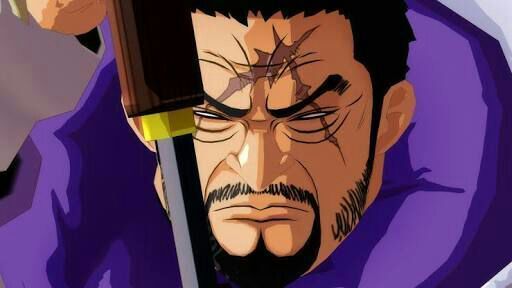
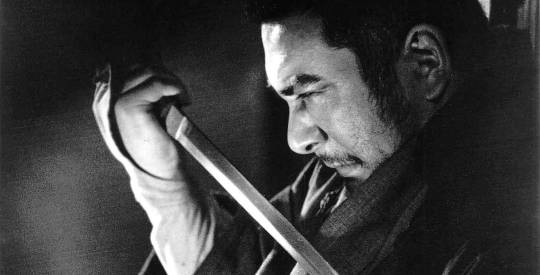
Literally is the same thing without scars, they even have the same sword...
However, the designs are not the only thing that Oda has been inspired to add to his work. There are a number of thoughts/quotes that he has also taken from different movies like this one, that he says is one of his favorites, called Shichinin no samurai (The Seven Samurais/ 七人の侍).
I won't make much spoilers. In one scene of the film, while the protagonists are looking for another samurai to join them, they hear that one has arrived at the town. To test if he's worth of joining them, one of them hides to the side of the door to ambush him, saying: "If he is a true swordsman he will be able to dodge it, a samurai never lets alcohol take control on himself". Does it remind you of something?
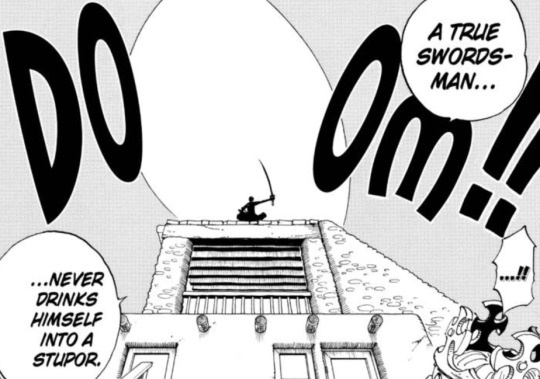
4. Roronoa Zoro's "true" inspiration.
Even though we all know Zoro is based on François l'Olonnais, who was the cruelest pirate of the Caribbean Sea; I can say that he is also a little based on Date Masamune.
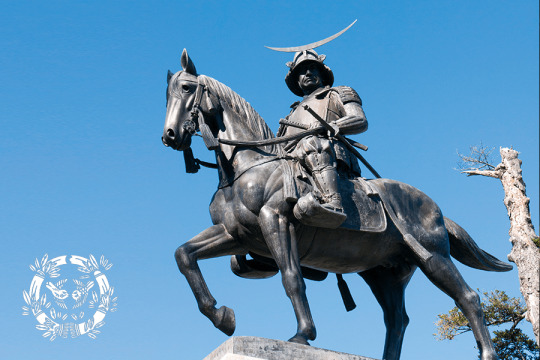
Excellent military tactician, was popularly identified because of the lack of one of his eyes, commonly being called "dokuganryū" (Dragon of a single eye/ 独眼 竜).
The exact cause for which he lost his entire eye is not known, but it is said that as a child he lost it because of smallpox and to save himself he took it off. After this, his mother told him he could never become a warrior, explaining to Masamune's father that having just one eye already put him in an abyssal disadvantage on the battlefield. Because of that, he swore he would never let anything else get over him, not even something like an illness.
At the young age of 17 or 18 years old, he took his father's place as the leader of Date's clan; later becoming one of the most powerful Daimyō (大名) of the old Japan.
This fiery samurai was also known because of his cruelty and cold personality. Not caring who he was talking to, he'd always be a prepotent and shameless man who gained the respect, but mostly fear, of those who were around him.
5. Pirate hunter's journey.
As we all know, in the begining of the serie when Luffy asked Zoro why he sailed, the swordsman told him he was looking for someone (Dracule Mihawk) but then got lost. Sailing to the sea to find recognition and become the greatest swordsman, as he promised to Kuina, sounds like certain practice called Musha shugyō (warrior training/ 武 者 修行) that's based on traveling or pilgrimage to which the ancient samurai were ascribed. A practitioner of this concept has to roam around Japan practicing and honoring his abilities without the protection of his family or his school, all alone and exposing himself to the dangers necessary to prove his worth. The possible activities of the adventurer could include training with other schools, fighting a duel, working as a bodyguard/mercenary, and looking for a Daimyō to serve.
Soooo he found a "Daimyō" to live and to die for.

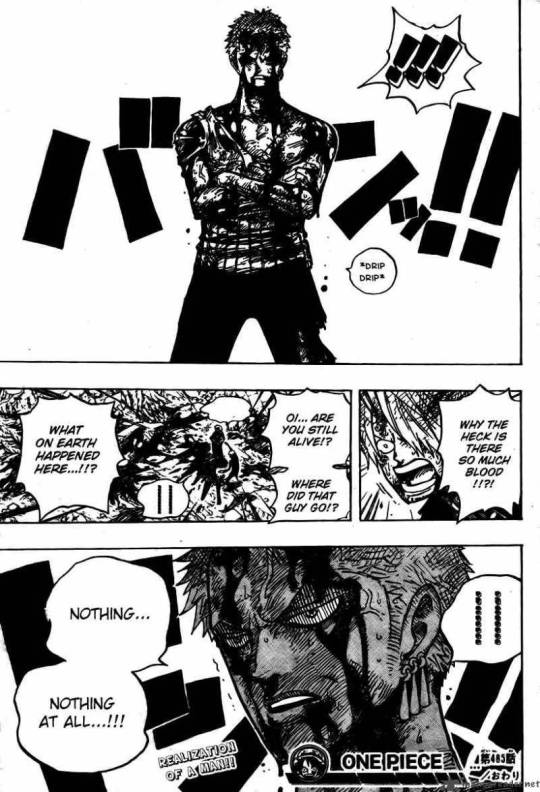
Note: I'm not saying Zoro is a samurai, in fact and sadly, he isn't. I repeat, I'm just pointing things that I can relate to them.
6. Kaidan.
Kaidan (怪談) is a Japanese word consisting of two kanji: 怪 (kai) meaning “strange, mysterious, rare, or bewitching apparition" and 談 (dan) meaning “talk” or “recited narrative.”In its broadest sense, kaidan refers to any ghost story or horror story, but it has an old-fashioned ring to it that carries the connotation of Edo period Japanese folktales. Kaidan entered the vernacular during the Edo period, when a game called Hyakumonogatari Kaidankai (A Gathering of One Hundred Supernatural Tales / 百物語怪談会 ) became popular. This game led to a demand for ghost stories and folktales to be gathered from all parts of Japan and China.
Originally based on didactic Buddhist tales, Kaidan often involve elements of karma, and especially ghostly vengeance for misdeeds. Onryō (Japanese vengeful ghosts / 怨霊) are far more powerful after death than they were in life, and are often people who were particularly powerless in life, such as women and servants. You all know who were servants? There's certain transtalion or meaning to samurai that says "those who serve in close attendance to the nobility"; Not only that, since Kaidan appeared in Edo period these warriors are the co-protagonists of many of those stories. If we look up at some of those stories we can conclude something; at least two of them are the "inspiration" to certain samurais in Wano and they are Kin'emon and O-kiku.
We need to be clear on something, they are considered ghosts by the people of Wano that seek to avenge Oden's death so thinking that Oda made this on purpose is pretty logic, right?
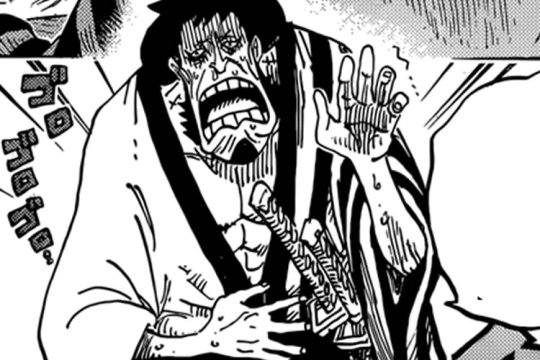
Lets start with Kin'emon. He's, at least a bit, inspired in Botan Dōrō (The Peony Lantern / 牡丹燈籠)
This tale tells that on the first night of Obon, a beautiful woman and a young girl holding a peony lantern stroll by the house of the widowed samurai Ogiwara Shinnojo. Ogiwara is instantly smitten with the woman, named Otsuyu and vows an eternal relationship. From that night onward, the woman and the girl visit at dusk, always leaving before dawn. An elderly neighbor, suspicious of the girl, peeks into his home and finds Ogiwara in bed with a skeleton. Consulting a Buddhist priest, Ogiwara finds that he is in danger unless he can resist the woman, and he places a protection charm on his house. The woman is then unable to enter his house, but calls him from outside. Finally, unable to resist, Ogiwara goes out to greet her, and is led back to her house, a grave in a temple. In the morning, Ogiwara's dead body is found entwined with the woman's skeleton.
Why I relate Kin'emon with this story? To be honest it reminded me of him for dumb reasons ;;; The woman's name sounds like Kin'emon's wife's name, O-tsuru. Also I have the feeling that he won't be able to resist any longer being apart with his wife, wich he seems to love very much. Or not necessarilly because he wants to be with her but to warn her to run away at some point and someone will notice and bla bla bla.

Now, O-kiku is inspired by the history of Banchō Sarayashiki (The Dish Mansion at Banchō / 番町皿屋敷 ) that tells that once there was a beautiful servant named Okiku. She worked for the samurai Aoyama Tessan. Okiku often refused his amorous advances, so he tricked her into believing that she had carelessly lost one of the family's ten precious delft plates. Such a crime would normally result in her death. In a frenzy, she counted and recounted the nine plates many times. However, she could not find the tenth and went to Aoyama in guilty tears. The samurai offered to overlook the matter if she finally became his lover, but again she refused. Enraged, Aoyama threw her down a well to her death.
It is said that Okiku became an Onryō who tormented her murderer by counting to nine and then making a terrible shriek to represent the missing tenth plate – or perhaps she had tormented herself and was still trying to find the tenth plate but cried out in agony when she never could. In some versions of the story, this torment continued until an exorcist or neighbor shouted "ten" in a loud voice at the end of her count. Her ghost, finally relieved that someone had found the plate for her, haunted the samurai no more.
In some versions of the tale, Okiku is a maid who incurs her mistress' jealousy. Her mistress breaks one of dishes that Okiku is responsible for and Okiku commits suicide. Similar to the other versions, her ghost is heard counting the plates, but her mistress goes insane and dies.
Did you notice the same name, that in her first apparition she is holding a plate and that she refuses someone who's looking for her to be his lover? Hmmm.
7. Extras.
These are just mentions so I'll compilate them here.
⦁ Zoro's name in Wano is Zorojuro, which sounds a lot like Sanjuro, the name of the protagonist from another samurai movie called Yojimbo (which probably Zoro got his personality from); casually made by the same director from The seven samurais, and a lot more movies about these warriors, Akira Kurosawa.
⦁ It's possible that Shuusui is based on, it is said to be, the best sword ever made by Masamune Ozaki, called Honjo Masamune. I think this sword was "stolen" and is still lost.
⦁ Zoro's way of seeing the world is absolutely based on Miyamoto Musashi's lessons writen on his book Go Rin no Sho (The Book of Five Rings/ 五輪書). Not only that, Musashi felt that he won his duels not because he had mastered the strategy, but because he was stronger, prepared or just lucky... we all know Zoro likes to leave all to luck.
⦁ Vivi calls Zoro "mr. Bushido". Bushidō (武士道) is a strict and particular ethical code to which many samurai gave their lives, which demanded loyalty and honor until death. If a samurai failed to maintain his honor, he could recover it by practicing seppuku.
⦁ O-Tama saying that is a disgrace for a warrior to feel hunger is also said in The Seven Samurais.
⦁ The Gorōsei (The Five Elders / 五老星) the leaders of the World Government and, as such, the world's rulers and the highest authority only below Im, are based on The Council of the Five Regents, or council of the five great elders (go-tairō / 五大老). This was a council formed by Toyotomi Hideyoshi to govern Japan instead of his son, Hideyori, until he came of age. Hideyoshi chose his five most powerful daimyō for this task: Ukita Hideie, Maeda Toshiie, Uesugi Kagekatsu, Mōri Terumoto and Tokugawa Ieyasu. With the creation of the council formed by five people, Hideyoshi hoped that the different components of the same one would be balanced, preventing that none of them took control of the power. However, almost immediately upon the death of Hideyoshi in 1598, the regents were divided into two groups: Tokugawa on the one hand, and the other four on the other. The war, however, did not begin until the mid-1600s, ending the same year at the Battle of Sekigahara, where a difficult peace was agreed upon that left Hideyori alive and in control of Osaka Castle.
⦁ It was said that Miyamoto Musashi, the most famous samurai of all time, could win any duel with one look. Ehem... Haoshoku haki?
⦁ The Iaidō (居合道) is a Japanese martial art related to the unsheathing and sheathing of the katana. It was practiced by the samurai, especially in the Edo period. These techniques arise mainly to be able to attack or defend at the same time that it was unsheathed, beginning therefore the confrontation with the weapon still in the saya (sheath) and unsheathing with the appropriate speed to attack or counterattack the opponent without giving him time to react. The main idea of Iaidō is to be able to react correctly to any unexpected situation. The first letter 'I' has as a translation of its ideogram the meaning of Spirit, Being, Will and also Intention, therefore, decomposing the term Iaidō we find its philosophical meaning as "the path of the harmony of the Being or the path of union of the spirit "('I' is spirit, 'ai' unite or harmony, and the suffix 'dō' way). I don't know about you but it reminds me a bit of the meaning of Wado Ichimonji (Straight Road of the Harmony / 和道一文字); of course not ignoring that this style is used sometimes in the serie.
⦁ In the second point "the Kitetsu", I also mentioned that there was a certain time in Japan when Tokugawa Ieyasu banned muramasa's swords around the country. Well, in chapter 926 we were shown that civilians couldn't carry weapons because that would be a clear statement of rebellion, just saying.
⦁ Ishho is based more in a Sōhei (Warrior monk / 僧兵) than in a Samurai.
⦁ Even when Miyamoto Musashi was known for fighting with 2 Bokken, he had an actual sword. The Tsuba of this sword, now in the Art Musseum of Fukuoka, is a little bit similar to Wado Ichimonji's tsuba.
⦁ Shimotsuki Yasuie or better known as Tonoyasu or Yasu, the happy man from Wano that lives in Ebisu, was shown to be based on the Shōgun mentioned in the second point, Tokugawa Ieyasu. The most famous Shōgun in the story of Japan.
⦁ Gyukimaru on Oihagi Bridge is based on Saitō Musashibō Benkei (西塔 武 蔵 坊 弁 慶 1155 - 1189), popularly called Benkei (弁 慶), Was a Sōhei who was under the orders of the samurai Minamoto no Yoshitsune. He is generally presented as a man of great stature, very strong and loyal, and is one of the favorite characters of Japanese folklore. Tells the story that Benkei would have been located on the bridge Gojo in Kyoto, where he challenged each warrior who passed, taking the sword of their defeated opponents, reaching a total of about 999 swords. In his 1000th duel, Benkei was defeated by Minamoto no Yoshitsune, son of the warlord Minamoto no Yoshitomo. Therefore, he became a warrior of Yoshitsune and fought alongside him in the Genpei war against the Taira clan. Curious, don't you think?
⦁ The relationship between O-kiku/Kikunojo and Kin’emon implies that they’re very close, we can see it in their flashbacks and even when they reunite, however, if we look at things in a more... real life way, we can say that their relationship is, or was, influenced by Shudô (衆道 ). Shudô was a samurai custom in which adult samurai engaged in pederastic relationships with younger samurai. This custom is most prominently seen, or discussed, in the Sengoku and Edo periods. The older man in the relationship, known as the nenja (念者), and the younger man, known by a variety of terms including wakashû (若衆), formed a close, tight personal relationship with one another. A nenja typically engaged in such relationships with only one wakashû at a time, and vice versa. Though much discussion today, based in modern/Western social mores about homosexual relationships, focus strongly on the homosexual sexual acts involved in the relationship, Shudô relationships went beyond this, and were strong personal and sentimental or emotional relationships, which involved as well strong elements of mentorship. Mentorship and training in the "warrior" lifestyle and values of the samurai was a major element of the relationship.
This is all I have so If there's something I missed please let me know, thanks for reading.
#I made this research until cap 943#so I still have to study recent chapters#Samurai#One piece#Wano#wano country#samurai references#samurai country#zoro#roronoa zoro#luffy#monkey d luffy#nami#sanji#usopp#brook#franky#chopper#jimbei#koshiro#o-kiku#kikunojo#kin'emon#yasuie#yasu#momonosuke#kozuki momonosuke#kozuki oden#kozuki clan#komurasaki
98 notes
·
View notes